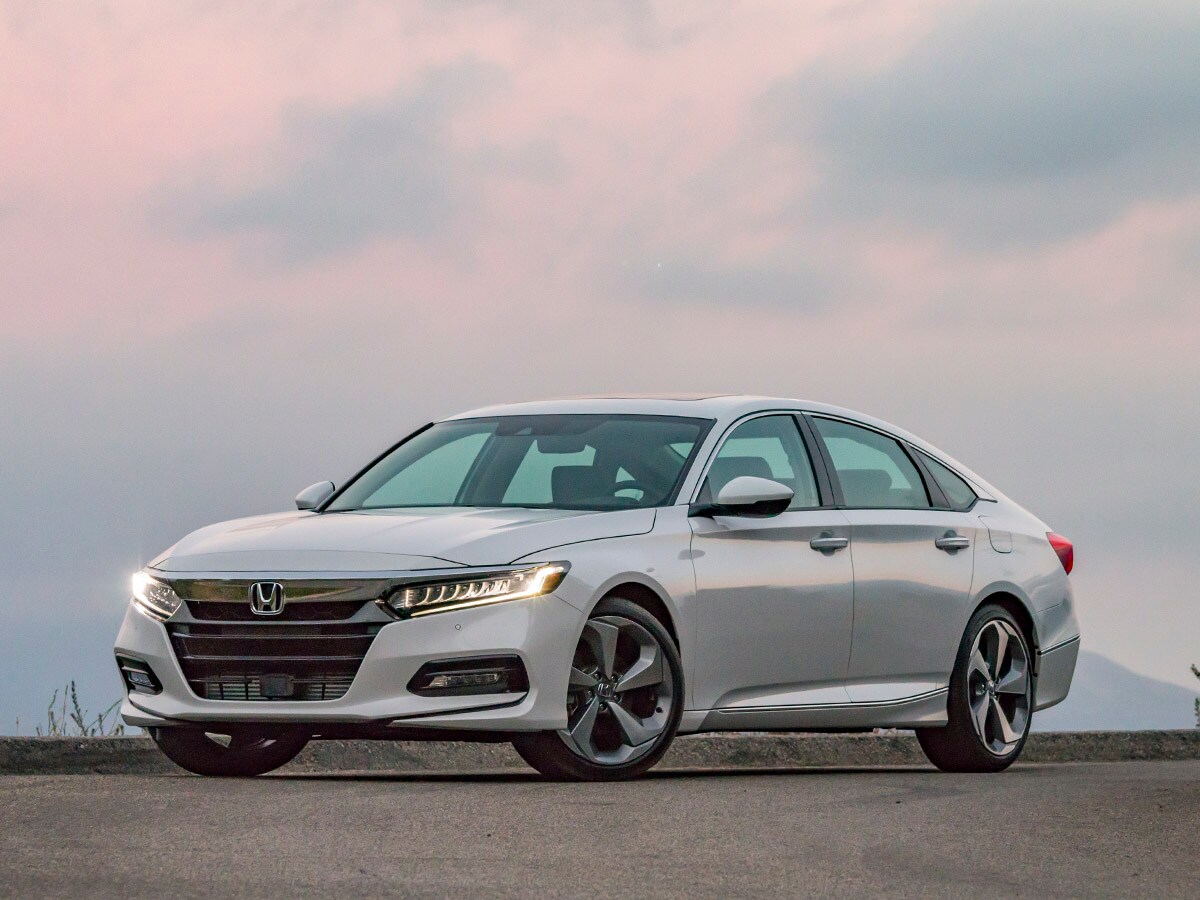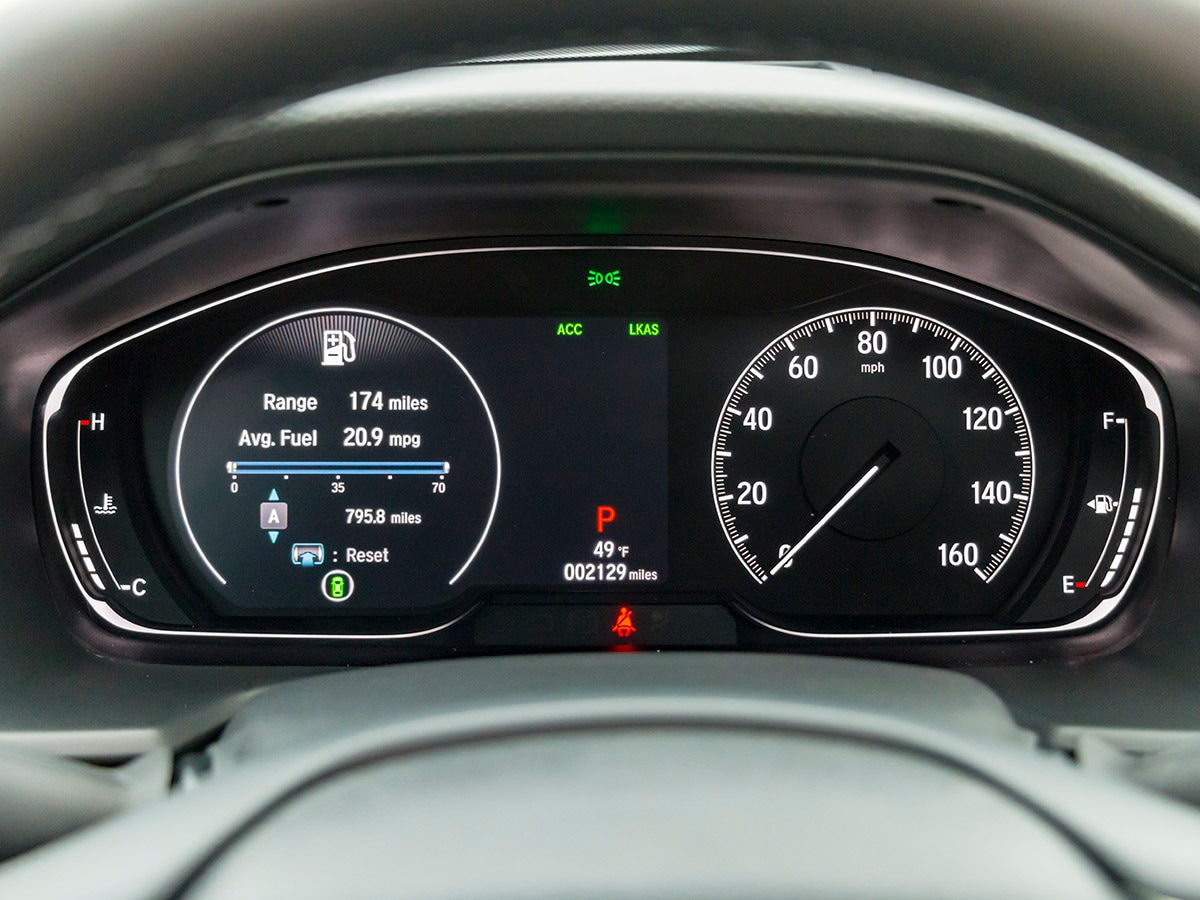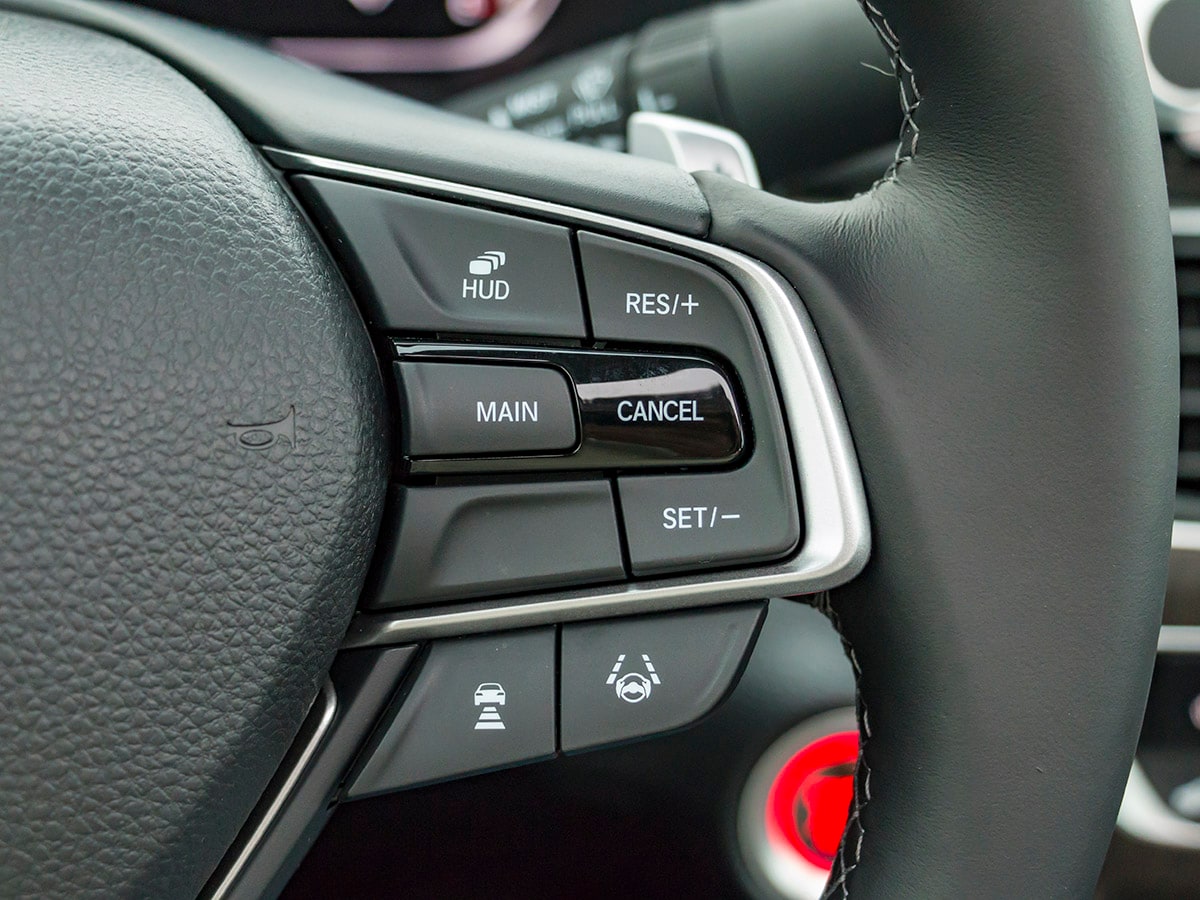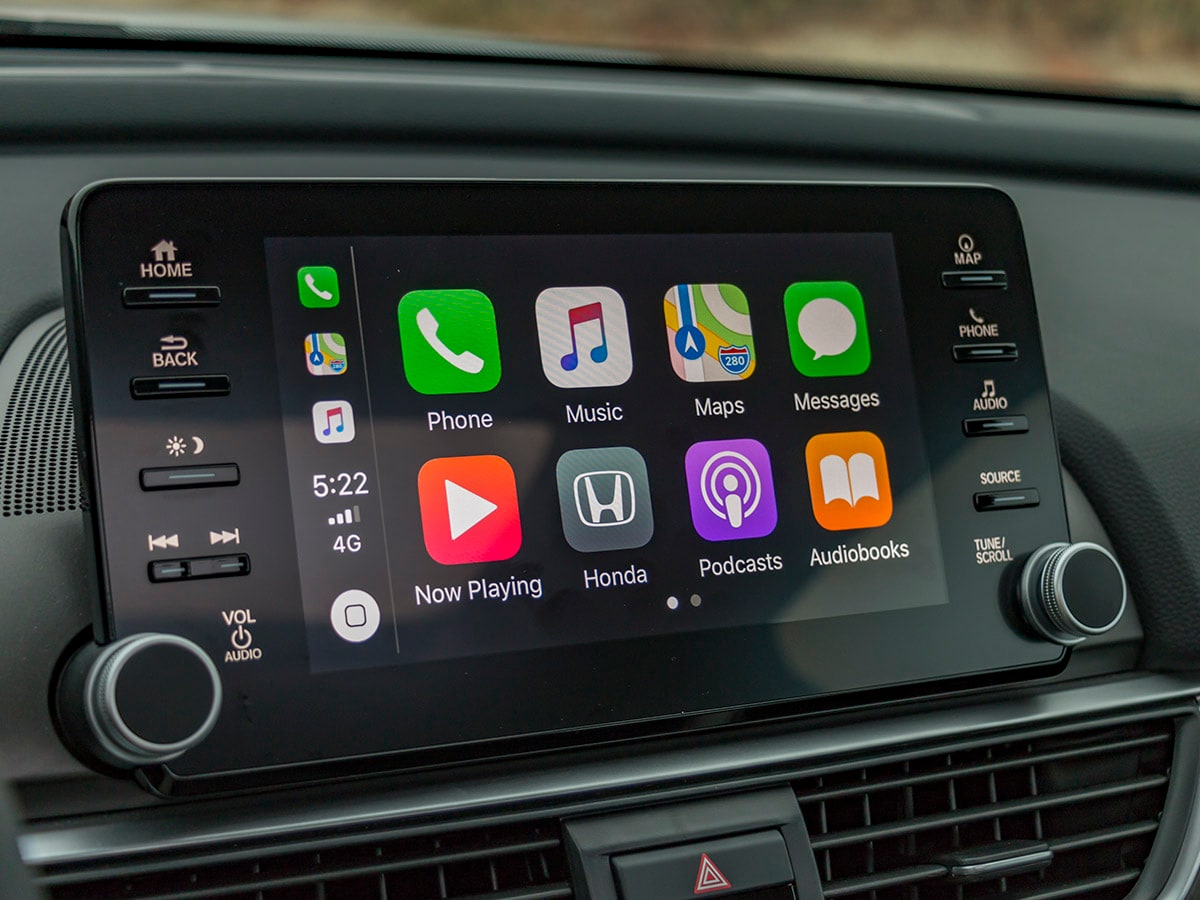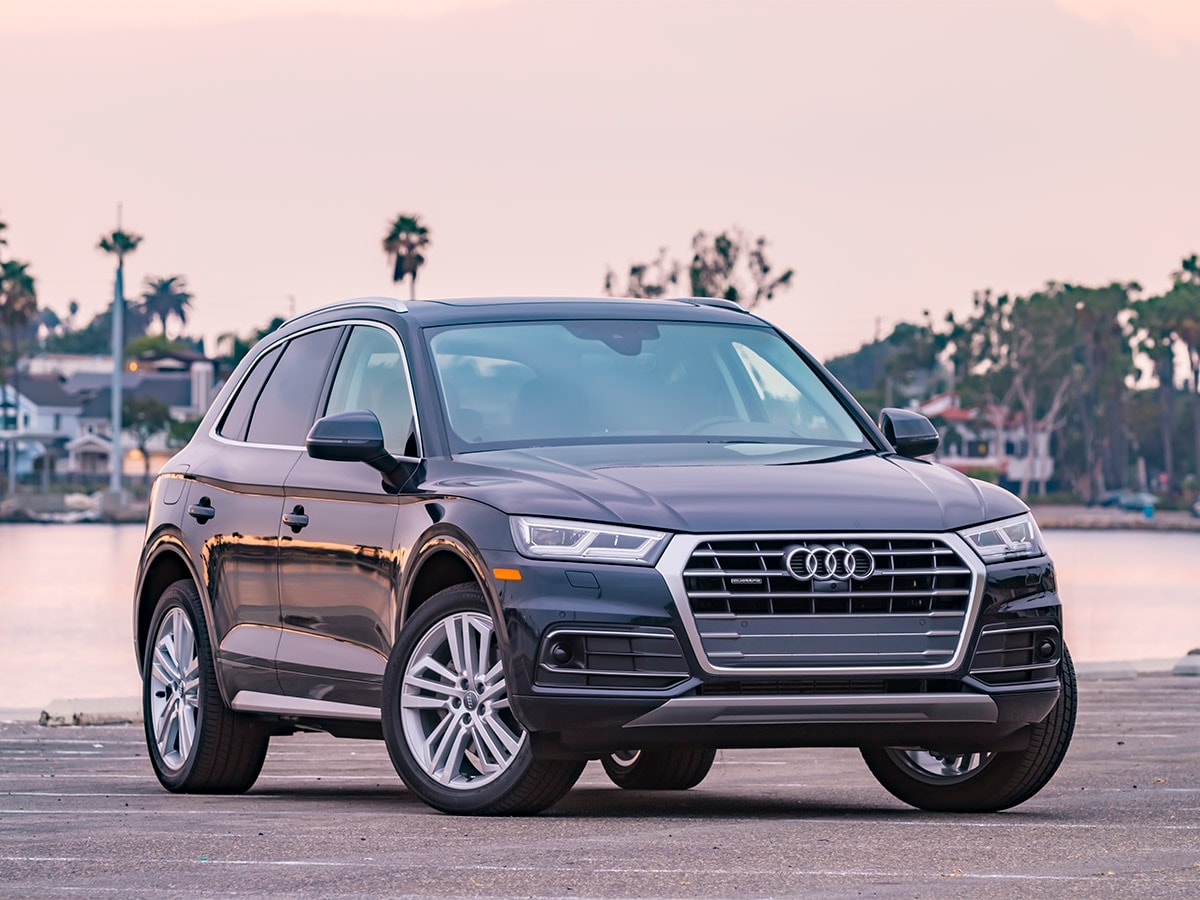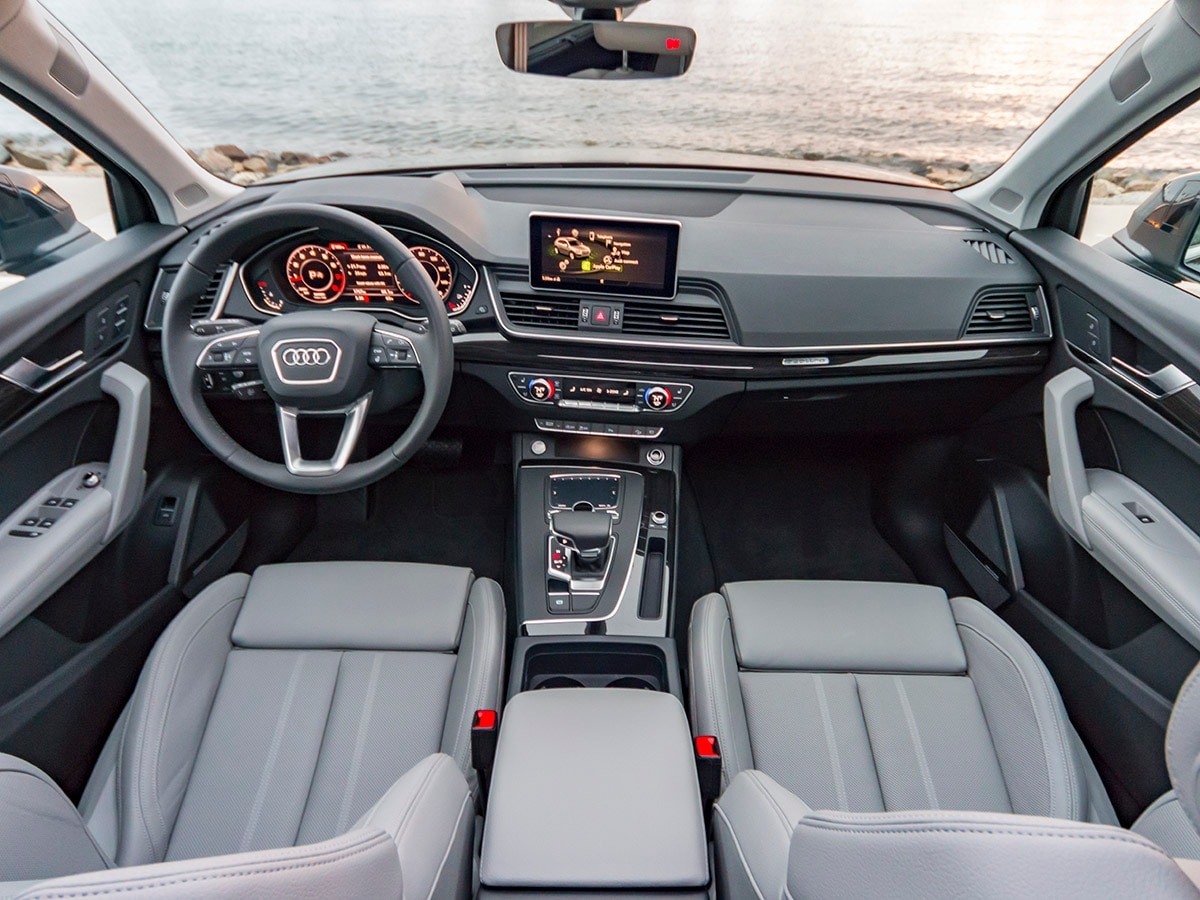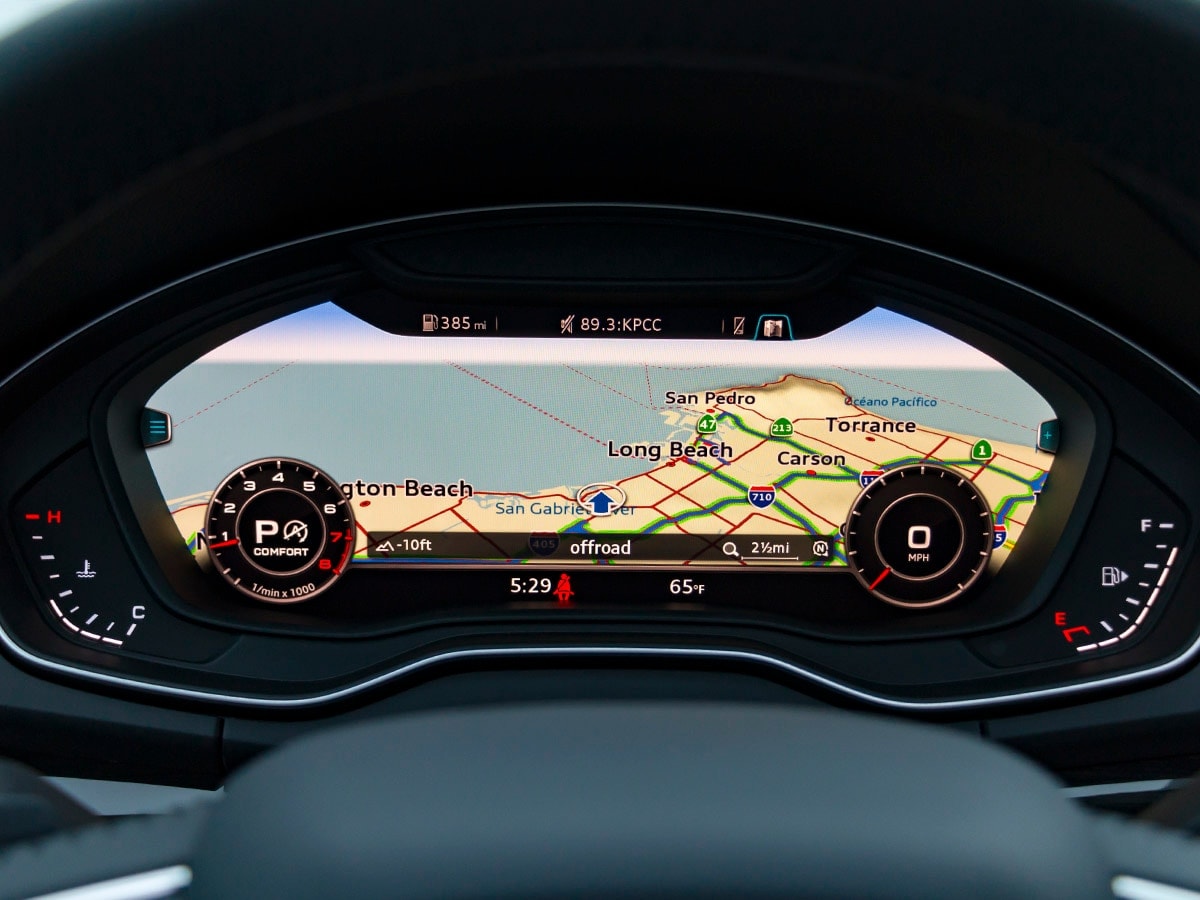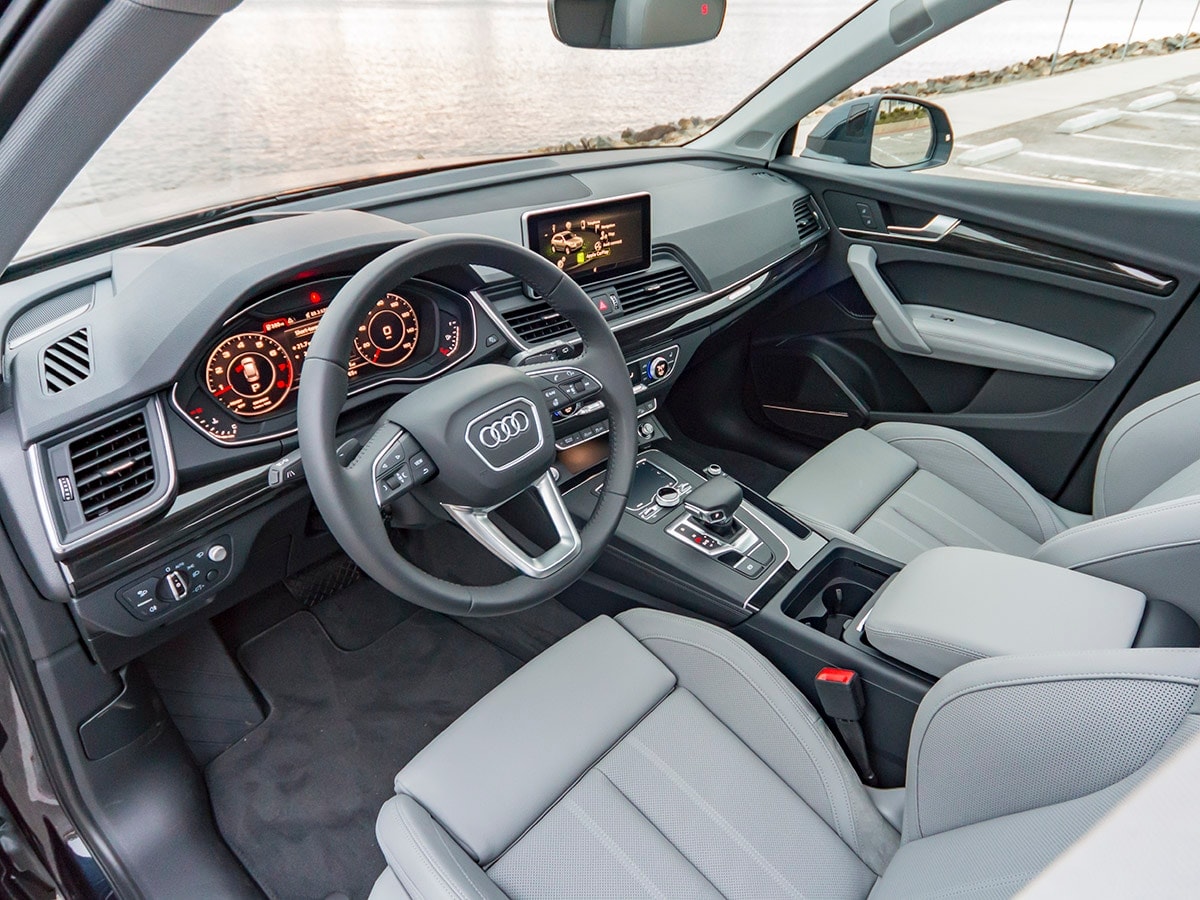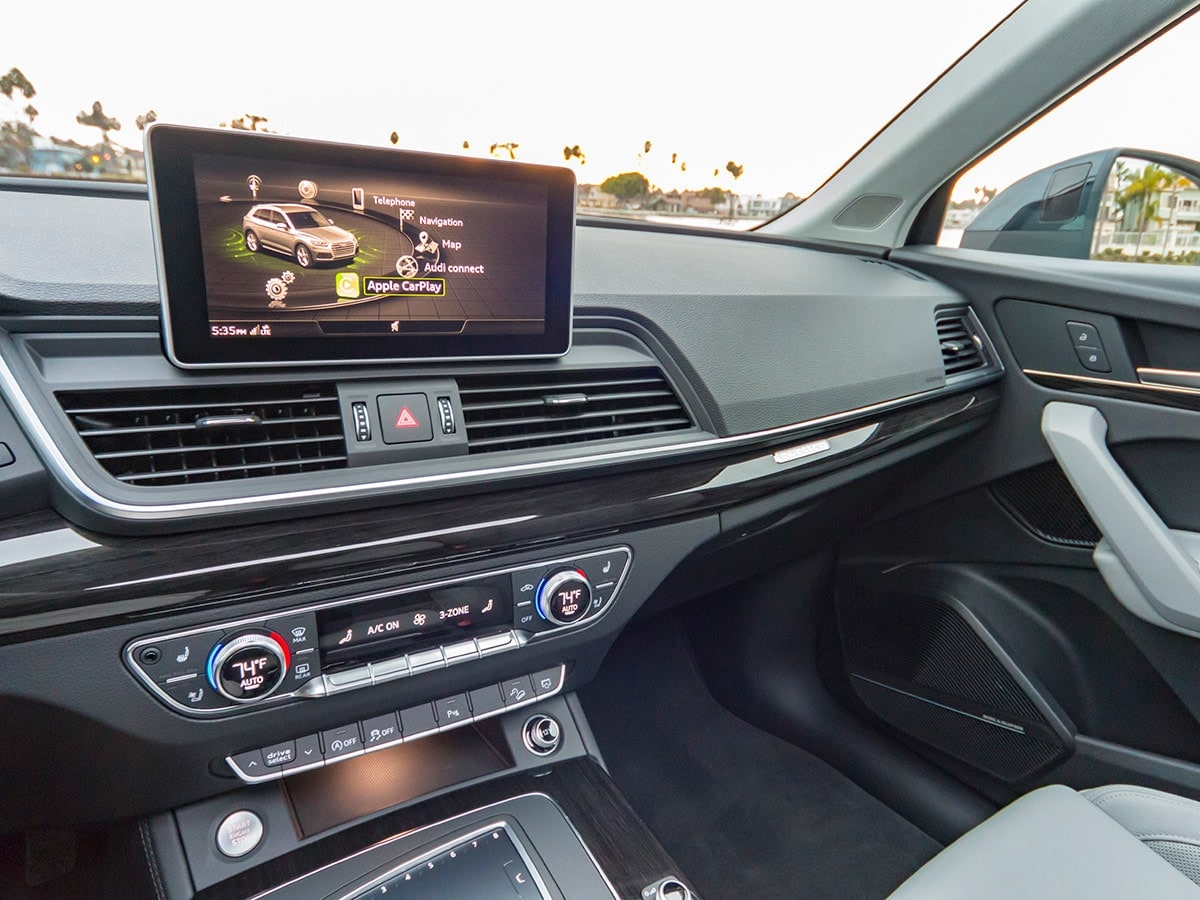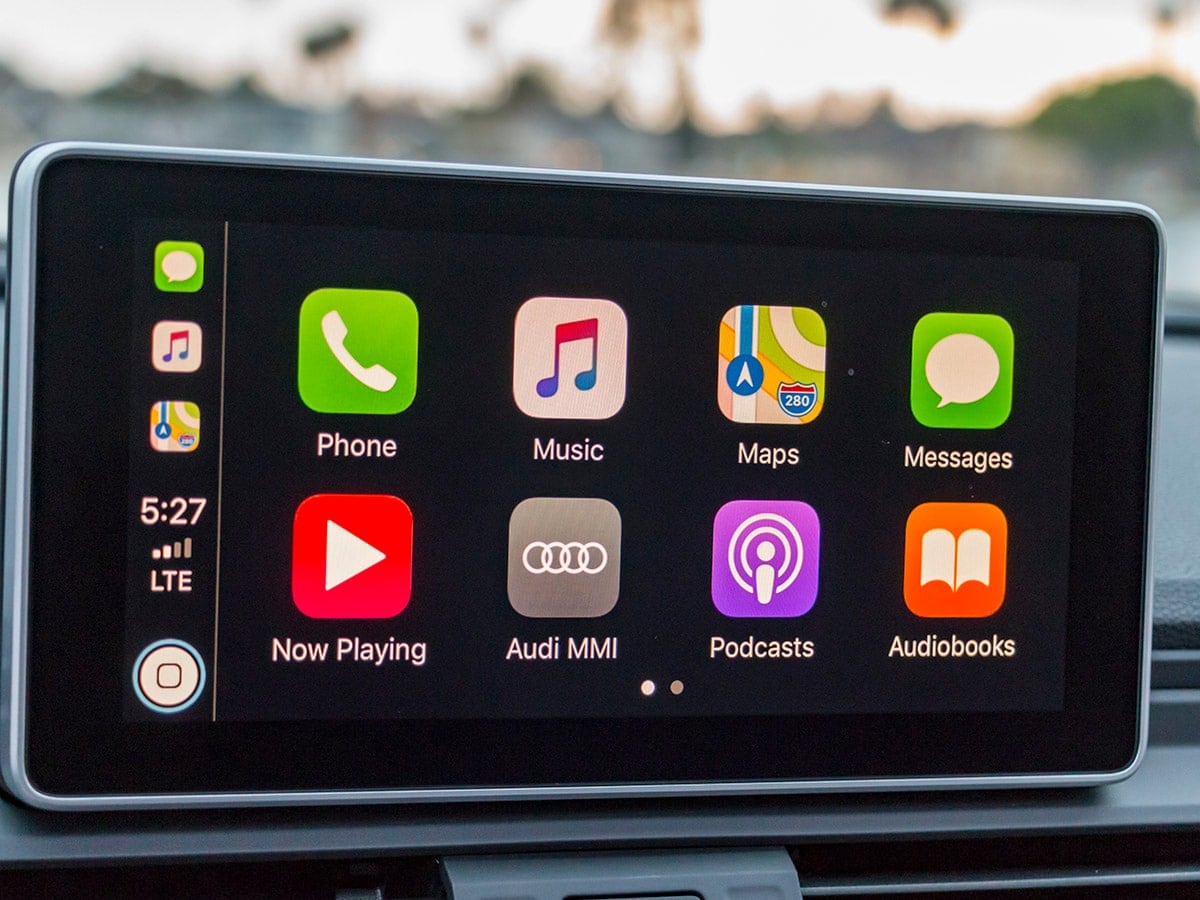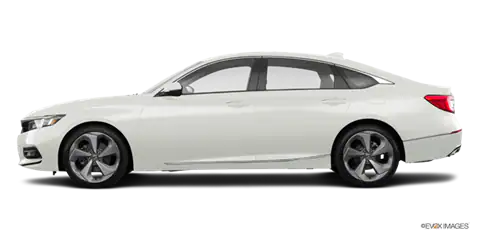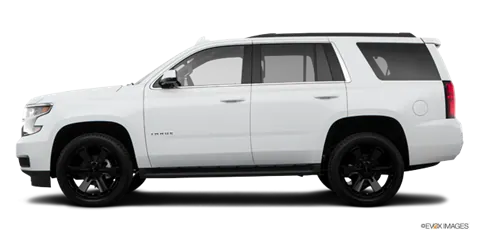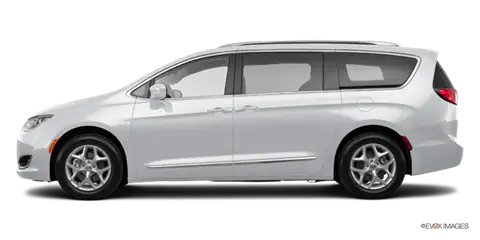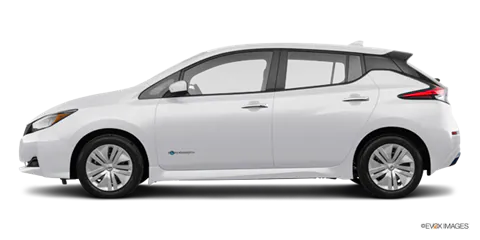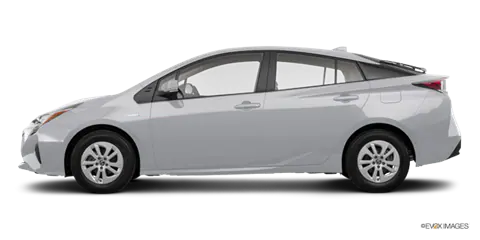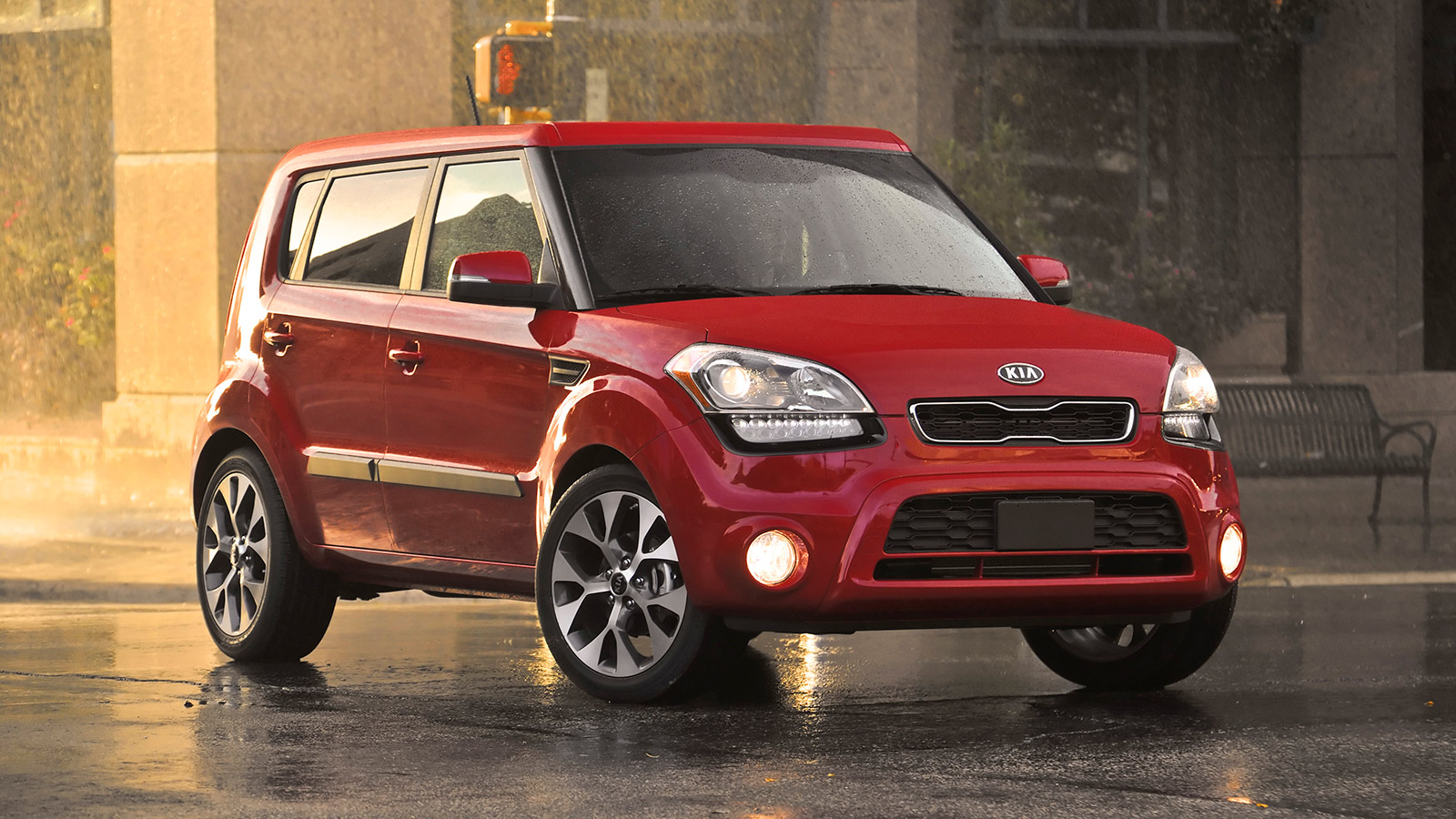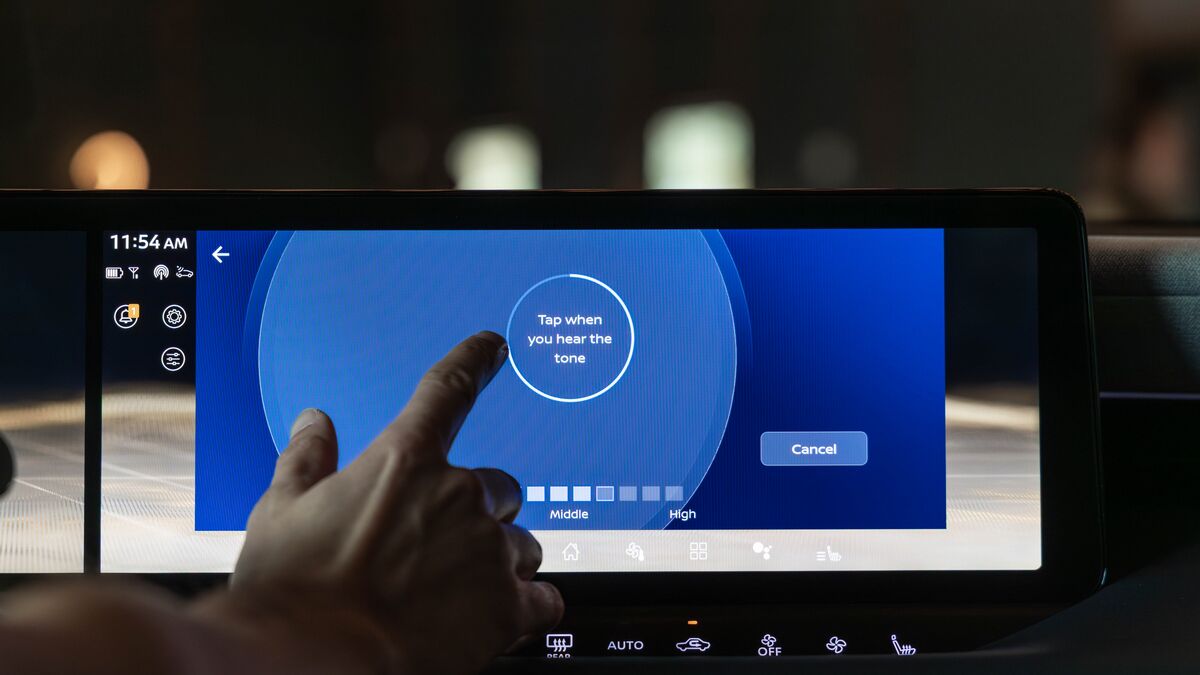
Where driving dynamics, comfort and safety are concerned, modern vehicles are steadily marching down a path toward parity. As such, technology has blossomed into one of the last great differentiators amongst competing models, and we at Kelley Blue Book have constructed an awards program around the cars that continue to push the digital envelope.
Winners are divided into two distinct categories: a mainstream set emphasizing the highest degree of tech-for-dollar, and another honoring the luxury car with the most innovative-yet-useful tech currently available. Though many cars today offer loads of cutting-edge technology at increasingly attainable prices — as detailed in our most recent list of 10 Best Automotive Technologies — one critically important measure helped catapult the Honda Accord and Audi Q5 into their respective winner’s circles: execution. The systems featured in both models delivered on their promise of enhancing the driving experience and safety quotient without adding complexity. And when distilled down to its essence, that’s what in-vehicle tech is all about.
Winner: Mainstream Brand
2018 Honda Accord
The completely redesigned 2018 Honda Accord shows that you don’t have to break the bank to get a tech-filled new car. Whether it’s the latest in active safety features or Apple’s CarPlay, the Accord has it — and that’s why it’s a Best Auto Tech Award winner for 2018.
Advanced driver assist and safety technology, perhaps more so than any other automotive advancement in decades, has quickly moved from being the exclusive domain of high-end cars down to those that every person can afford. The Honda Accord epitomizes this development.
All 2018 Accords will come standard with adaptive cruise control, forward collision warning and automatic emergency braking, lane departure warning and lane keeping assist. Blind spot monitoring with rear cross-traffic alert is standard on some models and optional on others.
The fact that a family sedan starting in the mid-$20,000 range offers such a comprehensive suite of standard safety technology is impressive, considering some manufacturers still require buyers to opt for pricey top-of-the-line trim levels to get these features, if they offer them at all. We’re looking at you, Ford and Chevrolet.
But it doesn’t stop there. Automatic headlights, another useful safety/convenience feature, is standard, along with dual-zone climate control and a 7-inch touchscreen. An optional 8-inch touchscreen that supports both Apple CarPlay and Android Auto is available as well. Another 8-inch color screen in the gauge cluster keeps the driver in the loop about what the car is up to. Push-button start is here too, though that’s becoming more and more standard these days. A 6-inch head-up display with turn-by-turn navigation and traffic sign recognition is available on some trims.
LED lighting and 4G LTE connectivity with Wi-Fi hotspot are here as well, as is the HondaLink system that offers app-connected remote locking and unlocking functions, stolen vehicle tracking, remote diagnostics, and teen-driver friendly geofencing and speed tracking.
Honda’s options list has more features plucked from the ranks of pricier vehicles too, including a 12-way power-adjustable front seat with memory, heated and ventilated front seats, and heated rear seats. Rain-sensing windshield wipers and front and rear parking sensors are also available.
The rise of the crossover over the past few years has not been kind to the midsize sedan segment, but Honda makes a compelling argument for the new Accord by bringing a slew of formerly luxury-exclusive tech to the masses.
There is heavyweight competition in the segment, but Honda should be commended for its commitment to including advanced safety technology as standard equipment — and its competitors should be held accountable for why they haven’t. There isn’t a good excuse not to include these systems any more.
For decades, the Honda Accord has shown itself as an excellent reliable, comfortable family sedan. The latest version is packed full of the latest technology, too. As such, it’s well deserving of our 2018 Best Auto Tech Award.
Winner: Luxury Brand
2018 Audi Q5
There is no shortage of technology in premium and luxury cars, but finding the right mix of price and high tech takes a bit of thinking. While ultra-lux sedans like the Mercedes-Benz S-Class are clear leaders when it comes to these advanced systems (the S-Class in particular has pioneered a bewildering array of safety and technology features over the years), the $100,000-plus price tags puts them out of reach for most of us.
And so, for the third annual Kelley Blue Book Best Auto Tech Award Winners, we picked the completely redesigned 2018 Audi Q5 as the winner in the luxury category. The Q5 is a compact luxury crossover that will sell by the boatload, with good reason. It’s nice to drive, comfortable inside, and is packed with nearly as much technology as your local Apple Store.
Many safety-oriented features are standard, including Xenon headlights (LEDs are an optional extra) and easy-to-see LED rear lights. Audi’s standard "pre-sense city" feature detects vehicles and pedestrians at speeds up to 52 mph and can automatically brake if a collision is imminent, either reducing the severity or avoiding a crash entirely. Active lane keeping assist vibrates the steering wheel if you are drifting over a lane line.
Audi pre-sense basic is another standard system that recognizes an impending collision and is set up to close the side windows, panoramic sunroof, and pretension the front safety belts — again, in an attempt to reduce the severity of the crash. We like systems like these, because they take sensors already built into the car, repurposing them in new and useful ways to keep you and your family safer.
Blind-spot monitoring and rear cross-traffic alert (with a "brake jolt" system to help encourage the driver to stop) are available on the two higher trim levels. And there’s a clever new use of blind-spot monitoring to warn you if you’re about to open a door into traffic when a vehicle or cyclist is approaching.
Adaptive cruise control is available, and includes the ability to come to a complete stop for a period of time and then resume without driver intervention (a genuine benefit in traffic). Audi says it can also provide some limited steering guidance to help keep you on course during your commute. Traffic sign recognition also recognizes speed limit signs as well as other alerts like no passing zones, and school and construction zones.
The Audi connect package offers a 4G LTE-connected Wi-Fi hot spot that also provides online traffic information, fuel prices and more — as well as safety-oriented features like automatic crash notification and a vehicle locator system. An Audi app lets you keep tabs on your car with teen-focused curfew and speed alerts, as well as remote lock and unlock features.
The Q5’s piece de resistance is Audi’s virtual cockpit which, alas, is only available on the top trim level. It’s an option that replaces the instrument panel with an enormous 12.3-inch display that can display beautiful Google Earth images when navigation directions are set, as well as a full-color head-up display right in the driver’s line of vision.
If we had one complaint about the Q5, it may be that the tremendous virtual cockpit isn’t standard across the model line. Someday, perhaps. Regardless, the Audi Q5 crossover is a technological tour de force and a well-deserved winner of our Best Auto Tech Award in the luxury category.
